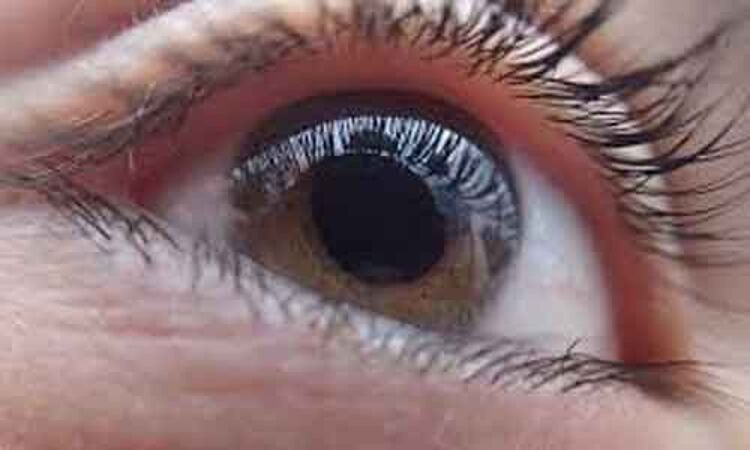- Home
- Medical news & Guidelines
- Anesthesiology
- Cardiology and CTVS
- Critical Care
- Dentistry
- Dermatology
- Diabetes and Endocrinology
- ENT
- Gastroenterology
- Medicine
- Nephrology
- Neurology
- Obstretics-Gynaecology
- Oncology
- Ophthalmology
- Orthopaedics
- Pediatrics-Neonatology
- Psychiatry
- Pulmonology
- Radiology
- Surgery
- Urology
- Laboratory Medicine
- Diet
- Nursing
- Paramedical
- Physiotherapy
- Health news
- Fact Check
- Bone Health Fact Check
- Brain Health Fact Check
- Cancer Related Fact Check
- Child Care Fact Check
- Dental and oral health fact check
- Diabetes and metabolic health fact check
- Diet and Nutrition Fact Check
- Eye and ENT Care Fact Check
- Fitness fact check
- Gut health fact check
- Heart health fact check
- Kidney health fact check
- Medical education fact check
- Men's health fact check
- Respiratory fact check
- Skin and hair care fact check
- Vaccine and Immunization fact check
- Women's health fact check
- AYUSH
- State News
- Andaman and Nicobar Islands
- Andhra Pradesh
- Arunachal Pradesh
- Assam
- Bihar
- Chandigarh
- Chattisgarh
- Dadra and Nagar Haveli
- Daman and Diu
- Delhi
- Goa
- Gujarat
- Haryana
- Himachal Pradesh
- Jammu & Kashmir
- Jharkhand
- Karnataka
- Kerala
- Ladakh
- Lakshadweep
- Madhya Pradesh
- Maharashtra
- Manipur
- Meghalaya
- Mizoram
- Nagaland
- Odisha
- Puducherry
- Punjab
- Rajasthan
- Sikkim
- Tamil Nadu
- Telangana
- Tripura
- Uttar Pradesh
- Uttrakhand
- West Bengal
- Medical Education
- Industry
Handheld pupillometer may accurately detect functional loss in glaucoma: Study

Singapore: Results from a proof-of-concept study have found shown handheld chromatic pupillometry (HCP) to be helpful in accurate, rapid, and objective detection of functional loss in glaucoma patients. The study was published in the British Journal of Ophthalmology.
Early detection and treatment of glaucoma can delay vision loss. However, its diagnosis occurs often occurs at a late stage, especially in low-income and middle-income countries, where up to 50% of patients are already blind in one eye at presentation.
Chromatic pupillometry has become increasingly recognized as an effective method for evaluating retinal and optic nerve health. The device measures the pupillary responses to light stimulations of different wavelengths.
Raymond P Najjar, Visual Neurosciences Research Group, Singapore Eye Research Institute, Singapore, and colleagues aimed to evaluate the pupillary responses to exponentially increasing blue and red light stimulations in patients with different severities of glaucoma using a custom-built handheld pupillometer.
The researchers enrolled 149 patients (median years: 68.5 years) with confirmed glaucoma and 173 healthy controls (55.2 (26.7) years). They monocularly assessed changes in pupil size in response to 9 s of exponentially increasing blue (469 nm) and red (640 nm) light-stimuli using a custom-built handheld pupillometer. Pupillometric features were extracted from individual traces and compared between groups.
Features with the highest classification potential, selected using a gradient boosting machine technique, were incorporated into a generalized linear model for glaucoma classification. Receiver operating characteristic curve analyses (ROC) were used to compare the performance of HCP, optical coherence tomography (OCT), and Humphrey Visual Field (HVF).
Based on the study, the researchers found the following:
· Pupillary light responses were altered in glaucoma compared with controls.
· For glaucoma classification, HCP yielded an area under the ROC curve (AUC) of 0.94, a sensitivity of 87.9%, and specificity of 88.4%.
· The classification performance of HCP in early-moderate glaucoma (visual field mean deviation (VFMD) > -12 dB; AUC=0.91) was similar to HVF (AUC=0.91) and reduced compared with OCT (AUC=0.97).
· For severe glaucoma (VFMD ≤ -12 dB), HCP had an excellent classification performance (AUC=0.98) that was similar to HVF and OCT.
"Our findings highlight the feasibility and high accuracy of chromatic pupillometry delivered using a handheld device for the objective detection of functional loss in glaucoma in a clinical setting," wrote the authors. Still, there is a need for community-based or opportunistic screening studies, as well as cost-effectiveness analyses to confirm whether HCP is a useful tool for glaucoma screening.
Reference:
Najjar RP, Rukmini AV, Finkelstein MT, et alHandheld chromatic pupillometry can accurately and rapidly reveal functional loss in glaucomaBritish Journal of Ophthalmology Published Online First: 01 December 2021. doi: 10.1136/bjophthalmol-2021-319938
Dr Kamal Kant Kohli-MBBS, DTCD- a chest specialist with more than 30 years of practice and a flair for writing clinical articles, Dr Kamal Kant Kohli joined Medical Dialogues as a Chief Editor of Medical News. Besides writing articles, as an editor, he proofreads and verifies all the medical content published on Medical Dialogues including those coming from journals, studies,medical conferences,guidelines etc. Email: drkohli@medicaldialogues.in. Contact no. 011-43720751


